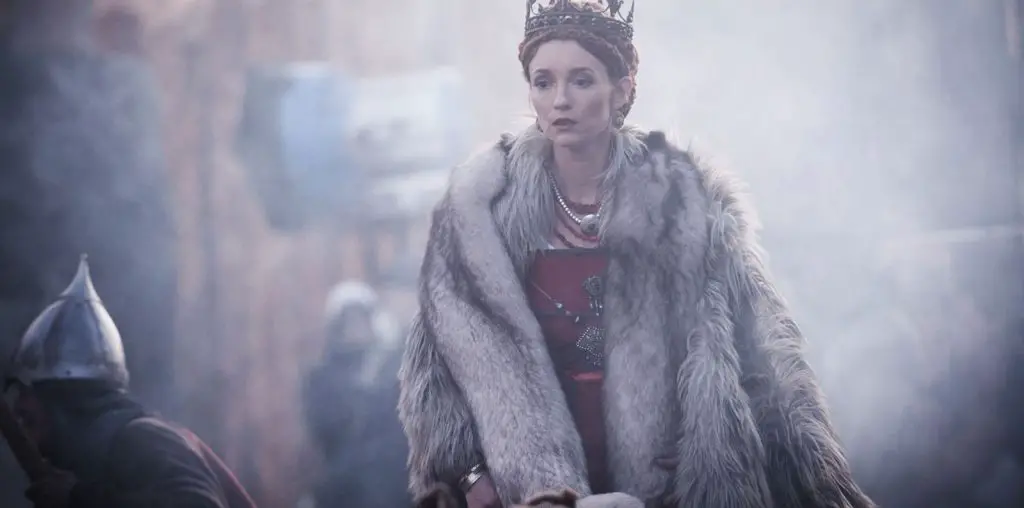
Roberto Rossellini’s 1954 “Joan of Arc at the Stake” has come down through the years with a poor reputation. Most people have never seen it (the film has yet to receive a commercial release in the U.S.) and those who’ve seen it have been dismissive of its merits. Viewed today, “Joan of Arc at the Stake” is actually a fascinating production that offers a high share of surprises and a truly stunning performance by Ingrid Bergman, Rossellini’s then-wife.
Based on the oratorio by Arthur Honegger and Paul Claudel, “Joan of Arc at the Stake” began as a theatrical production that Rossellini showcased in several European cities during the early 1950s. It was not staged in America since the director and his star were still being blacklisted following their scandalous adulterous affair during the making of “Stromboli” in 1949. The film version preserves the basic theatrical settings and concepts, and its painted backdrops and frequently static camerawork gives the impression of a filmed play rather than a cinematic experience.
Yet it is an extraordinary theatrical event: Joan of Arc, having just perished in the flames, arrives in purgatory and is greeted by Brother Domenico, the priest who was her first spiritual advisor. Together they view the chapters of her brief but dramatic life, some being retold with dramatic exaggeration (her trial is shown with her accusers donning headgear to make them look like sheep, pigs and donkeys) and some with touching simplicity (her rural childhood, where simple games played outdoors kept boys and girls happy for endless hours). Above the vast plains of purgatory, the stars shine down from the distant universe and voices of the saints call out to Joan in praise. Steadfast against the humiliation and slander she faced, Joan’s faith never waivers and her place in Heaven is eventually secured.
But all is not stagy here. “Joan of Arc at the Stake” actually opens with a remarkable cinematic effect in which a squadron of angels (lifesized statues of a medieval design) travel in a spiral descending formation while Joan, having died, finds her soul in ascent through the vastness of space. As this occurs, the majesty of Honegger’s music envelopes the soundtrack, creating the perfect sense of aural ethereal splendor.
As the emotional anchor of the production, Ingrid Bergman gives an extraordinary performance as Joan (her third go-round in the role, having essayed it on Broadway in 1946 and in the disastrous 1948 epic “Joan of Arc”). Although the camera close-ups show she is too mature to be the youthful Maid of Orleans, her remarkable ability to bring forth the pride and piety of Joan more than compensates for her lack of youth. As the voices of the saints call out from the heavens, Bergman reaches her arms far to feel their presence at her fingertips. She is not grabbing, but seeking to embrace the essence of her life’s work. The complete sense of love which she possesses at this moment is awe-inspiring, and rarely has any performer been able to personify the purity of divine fulfillment with such skill and beauty.
In the film’s dramatic climax, when Joan’s execution is staged again, Bergman is a haunting presence as the flames slowly gather around her and incinerate her body. But at the moment when her body is lurching forward to expire, she suddenly rises and tears off the chain that binds her to the post atop the fire. Her arms fling out with joy and her head tilts back in a cheer of liberation. She has come to death not in pain, but in the rapture of knowing a greater glory awaits her soul. It is a shocking and exhilarating moment, and a credit to both the star and director for finding the right level of emotional balance. If “Joan of Arc at the Stake” continues to be lost in obscurity, it has absolutely nothing to do with the value of the film, but the failure of critics and audiences to recognize brilliance when it is laid before them.

